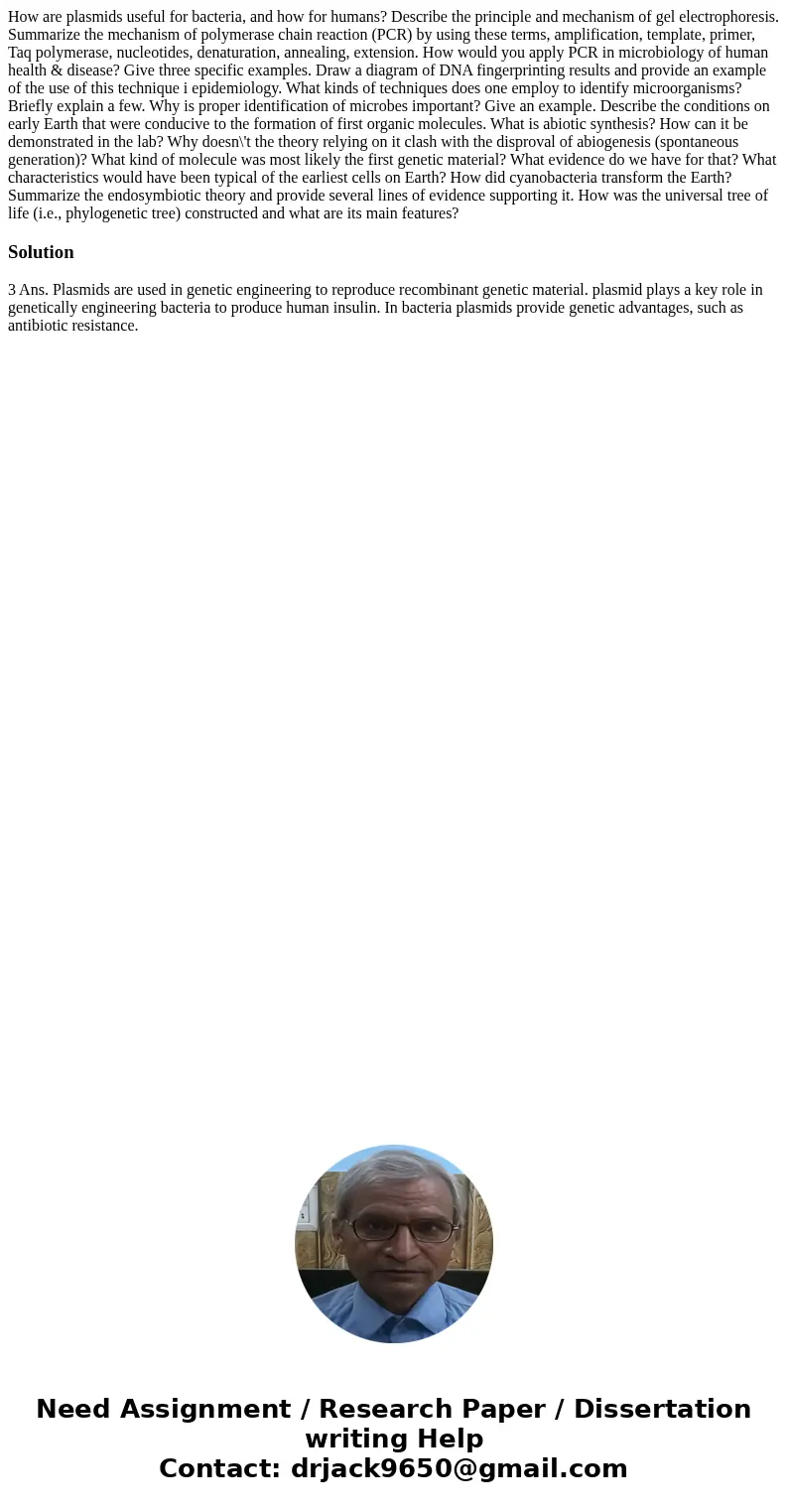How are plasmids useful for bacteria and how for humans Desc
How are plasmids useful for bacteria, and how for humans? Describe the principle and mechanism of gel electrophoresis. Summarize the mechanism of polymerase chain reaction (PCR) by using these terms, amplification, template, primer, Taq polymerase, nucleotides, denaturation, annealing, extension. How would you apply PCR in microbiology of human health & disease? Give three specific examples. Draw a diagram of DNA fingerprinting results and provide an example of the use of this technique i epidemiology. What kinds of techniques does one employ to identify microorganisms? Briefly explain a few. Why is proper identification of microbes important? Give an example. Describe the conditions on early Earth that were conducive to the formation of first organic molecules. What is abiotic synthesis? How can it be demonstrated in the lab? Why doesn\'t the theory relying on it clash with the disproval of abiogenesis (spontaneous generation)? What kind of molecule was most likely the first genetic material? What evidence do we have for that? What characteristics would have been typical of the earliest cells on Earth? How did cyanobacteria transform the Earth? Summarize the endosymbiotic theory and provide several lines of evidence supporting it. How was the universal tree of life (i.e., phylogenetic tree) constructed and what are its main features?
Solution
3 Ans. Plasmids are used in genetic engineering to reproduce recombinant genetic material. plasmid plays a key role in genetically engineering bacteria to produce human insulin. In bacteria plasmids provide genetic advantages, such as antibiotic resistance.

 Homework Sourse
Homework Sourse